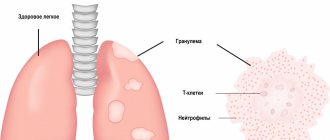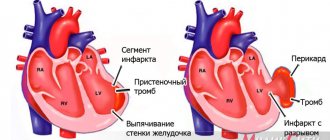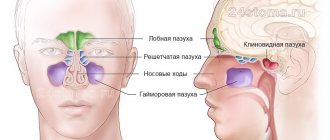Author:
Amelicheva Alena Aleksandrovna medical editor
Cough is a reflexive protective reaction of the body when the respiratory tract is exposed to various irritants (dust, smoke, pollen), mucus, liquids, foreign bodies, pathogens.
In most cases, cough goes away within 3 weeks and does not require treatment, but sometimes it can be a sign of a serious illness: tuberculosis, bronchial asthma, bronchitis, coronavirus infection (COVID-19) and others.
The following symptoms may accompany a cough: fever, sore throat, runny nose, weakness, headache, hoarseness, increased fatigue, increased sweating, muscle pain, difficulty breathing, loss of smell or taste.
Causes of cough
Cough can be acute, subacute and chronic. An acute cough lasts less than 3 weeks and is usually caused by viral and other infections. The disease often begins with a dry cough, which subsequently develops into a wet cough with sputum production. Subacute cough lasts from 3 to 8 weeks, this symptom may persist after the end of the underlying illness (for example, a respiratory viral infection or influenza). Chronic cough lasts more than 8 weeks (more than 4 weeks in children) and may be associated with postnasal drip (an inflammatory process in which mucous drains down the back of the throat into the airways), gastroesophageal reflux disease, bronchial asthma, interstitial lung diseases, chronic obstructive pulmonary disease (COPD) and others.
In children, cough most often occurs with colds, flu, false croup, bronchiolitis, and whooping cough.
Causes of acute cough include:
- upper respiratory tract infections (colds, flu, laryngitis, sinusitis, whooping cough);
- lower respiratory tract infections (acute bronchitis, pneumonia);
- coronavirus infection (COVID-19);
- exacerbation of a chronic disease (bronchial asthma, chronic obstructive pulmonary disease, chronic bronchitis);
- inhalation of dust, smoke, chemicals.
Causes of chronic cough include:
- Chronical bronchitis;
- bronchial asthma;
- allergies (allergic rhinitis, hay fever);
- smoking;
- bronchiectasis;
- gastroesophageal reflux disease (GERD);
- tuberculosis;
- heart failure;
- lungs' cancer;
- emphysema;
- sarcoidosis;
- cystic fibrosis (in children);
- certain medications (ACE inhibitors prescribed to treat heart failure and hypertension).
Child's cough
A cough is a sharp expulsion of air from the lungs and respiratory tract, which was previously retained by a closed glottis. The volume of the cough depends on the pressure of the exhaled air, and its tone depends on the properties and characteristics of the walls of the respiratory tract.
Cough in a child or children appears due to changes in the pharynx, larynx, trachea, bronchi, pleura, irritation of the cough center, external auditory canal
A cough appears with changes in the pharynx, larynx, trachea, bronchi, and pleura and with irritation of the cough center and external auditory canal. As a reflex act, cough can be caused by irritation of the endings of the vagus and glossopharyngeal nerves located in the mucous membrane of the respiratory tract: pharynx, larynx, trachea and large bronchi. In the smallest bronchi and alveoli there are no such endings, so there is no irritation of the nerve endings and no cough reflex occurs.
Cough in a child or children is caused by irritation of the cough zones
Most often, a cough is caused by irritation of the so-called cough zones : the posterior wall of the pharynx, the glottis and the tracheal bifurcation. The pleural layers are also a significant receptor field. During inflammatory processes in the respiratory tract, the nerve endings are irritated by the edematous mucous membrane or by accumulated pathological secretions, advanced by the ciliated epithelium to the cough zones. Swelling and accumulation of secretions can be of allergic origin (examination by a pediatric allergist Moscow - Markushka clinic) or be the result of stagnation in circulation.
In children, in some cases, mechanical irritants may be foreign bodies in the respiratory tract, in others, compression of the trachea or vagus nerve by enlarged lymph nodes and tumors in the mediastinum.
Rare cough tremors are physiological, in particular, the accumulation of mucus in the larynx during sleep causes cough tremors; they can also occur when mucus accumulates from the nasopharynx above the entrance to the larynx.
An acute febrile state with cough is characteristic of viral respiratory infections, which are epidemiological in nature. It is important to know whether the disease began with a cough or whether the cough appeared as the disease progressed.
Character of cough in a child, children
It is also necessary to determine the nature of the cough : dry or wet, paroxysmal, spastic, developing during the day or mainly in the evening, when falling asleep, at night, frequent or only coughing, etc.
What matters is the presence of sputum and whether a cough precedes its release: sputum is released from the nasopharynx without a cough, and sputum from the middle and lower respiratory tract is expelled with a cough.
Types of cough in children, children, wet, dry
Pharyngeal cough . Accumulation of mucus at the entrance to the larynx or dryness of the pharyngeal mucosa causes short, usually repeated coughing shocks. They are called coughing, which emphasizes their mild nature. The cause of coughing can be acute or chronic pharyngitis, a mild form of bronchitis, an established habit (like a tic) formed during or after bronchitis and sinusitis (pediatric ENT doctor - Markushka clinic).
A simple wet cough is a medium-volume cough that occurs when the bronchial mucosa is irritated during bronchitis, sinusitis, bronchiectasis (a persistent cough often occurs, reminiscent of whooping cough (whooping cough vaccination for children - Markushka clinic); in the morning, sputum comes out “a mouthful”) , with congestive bronchitis (heart failure), with esophageal-tracheal fistula in newborns. If such a fistula is present, the child begins to cough immediately after the first sip of food and coughs with each feeding. Cyanosis and severe suffocation may develop. A distinctive feature of a wet cough is its cyclical nature, that is, a natural cessation of a coughing attack.
A simple dry cough is an almost constant cough without mucus discharge. Usually such a cough is called irritating, since subjectively it is felt as intrusive and unpleasant. Occurs in the initial stage of bronchitis, with laryngitis, laryngotracheitis, spontaneous pneumothorax, aspiration of a foreign body (immediately after aspiration, cyanosis and suffocation develop, subsequently a persistent, sometimes paroxysmal cough, reminiscent of whooping cough, persists for a long time), with damage to the hilar lymph nodes by tuberculosis (Mantoux reaction for a child - children's clinic "Markushka") or non-Hodgkin's lymphoma, with inflammation of the costal pleura (a cough occurs with every deep breath). When moving from a cold to a warm room, a cough may occur in healthy children.
Treatment of acute and chronic laryngitis - pediatric homeopath, Markushka clinic.
Intermittent, persistent (controllable) cough occurs with age-related respiratory failure, when, despite severe irritation, an optimal breathing rhythm must be maintained, with pain of various localization associated with inhalation, with pleuropneumonia, dry pleurisy, fractured ribs, fractures in the area of intervertebral joints in the thoracic spine, with inflammatory diseases in the upper abdomen, during severe headaches of various origins.
Cough with croup is a persistent cough of a special tone and overtone.
Laryngeal cough has a hoarse overtone, typical of diseases of the larynx. With diphtheria of the larynx (diphtheria vaccination for children - Markushka clinic), the cough gradually becomes almost silent. In case of viral croup (influenza, measles, parainfluenza, etc.) or other diseases, the cough is hoarse, barking, but the voice remains intact. Measles vaccination for children - children's medical.
A bitonal cough is a deep cough with a double sound: a high-pitched whistling tone and a lower, hoarse tone during the cough impulse. Characteristic for narrowing of the lower respiratory tract in the presence of a foreign body or compression by enlarged paratracheal lymph nodes, goiter, as well as other stenotic processes in the posterior mediastinum, laryngotracheobronchitis, bronchiolitis.
Paroxysmal cough ( coughing attacks ) is a sudden series of coughing impulses. The most striking example is the cough of whooping cough. The disease is accompanied by a series of 8-10 short coughing impulses, which are repeated after a reprise - a deep whistling inhalation (a sound phenomenon associated with the flow of air through a spasmodic glottis). During an attack, the pressure in the vessels of the head increases, hypoxia develops, the face becomes red or bluish, and the eyes fill with tears. At the end of the attack, viscous mucus comes out and there may be vomiting. Such attacks are very exhausting for the child. The severity of coughing attacks varies from person to person. At night the cough is stronger and more frequent than during the day. There may be an ulcer on the frenulum of the tongue (injury from coughing).
Whooping cough is also obsessive and acyclic, but is not accompanied by recurrences. It usually indicates the presence of very viscous sputum. The same cough is observed in cystic fibrosis; Its pulmonary manifestations are chronic bronchitis, peribronchitis, sometimes bronchiectasis with sputum production, often copious. In severe purulent bronchitis, sputum is detected, but there are no recurrences. With bronchiectasis due to chronic bronchitis, chronic pneumonia, with cystic lung or individual pulmonary cysts (not associated with cystic fibrosis), reprises also do not occur, in contrast to whooping cough. Whooping cough differs from wet cough in the absence of cyclicity.
Psychogenic cough . A child's cough, especially recurrent cough, may have a typical genesis. Increased maternal anxiety, concentration and attention to respiratory symptoms may be the cause of the child's cough reflex . These children have a series of dry, loud coughing bursts in situations where they want to get attention or achieve their goals; at the reception, they cough before the examination, abruptly stopping coughing after the anxious anticipation of troubles associated with the examination gives way to calm. A new coughing attack can be provoked by touching on a topic that is unpleasant for the child (whims, keeping a daily routine) or even by simply starting an abstract conversation, as if not paying attention to the child. Consultation with a child psychologist - Markushka Clinic.
Hemoptysis is coughing up sputum with blood in the form of streaks and pinpoint inclusions due to diapedesis of red blood cells with increased permeability of the vascular walls or rupture of capillaries. Pulmonary hemorrhage - coughing up clear, scarlet, foamy blood in an amount of 5-50 ml or more. Coughing up blood and bloody sputum is rare in children. Blood released when coughing with sputum may be scarlet or altered if red blood cells break down and hemosiderin is formed (“rusty sputum” in patients with lobar pneumonia). Unlike bleeding from the stomach, hemoptysis involves blood mixing with air. Bloody vomit is usually black or brown-black in color.
Hemoptysis can be observed with bronchiectasis, hemorrhagic pneumonia in newborns, lobar pneumonia, idiopathic hemosiderosis of the lungs, severe congestion in the pulmonary circulation with left ventricular failure, for example with mitral or aortic disease, with renal hypertension, with whooping cough, injury to the respiratory tract by foreign bodies, tuberculosis lungs (cavities or breakthrough of intrathoracic lymph nodes affected by tuberculosis into the lumen of the bronchus).
Which doctors should I contact about a cough?
To determine the causes of cough, diagnose the condition and treat it, you must consult a therapist or pediatrician. If your cough doesn't go away within a few weeks, make an appointment with a pulmonologist or gastroenterologist (if you have acid reflux or established GERD).
A cough that occurs due to a cold or flu usually goes away on its own. You need to drink as much fluid as possible and get plenty of rest; to relieve pain and reduce high fever, you can take paracetamol or ibuprofen (attention: you should not give aspirin to children to reduce fever, its use is associated with the development of Reye's syndrome).
The effectiveness of multi-ingredient over-the-counter cough and cold medications in relieving symptoms is questionable. Research shows that not only do they not improve the condition, but they may have potentially serious side effects. They may also contain paracetamol and may cause an overdose if you are already taking it. It is not recommended to give over-the-counter multi-ingredient cough and cold medicines to children under 12 years of age. Cough lozenges (for children over 4 years old) and honey (for children over 1 year old), humidification and ventilation of the room can alleviate the condition.
Symptoms accompanying dry cough
Based on what manifestations occur along with a dry cough, one can draw conclusions about the possible causes of the condition and decide on diagnostic measures.
Cough without fever
A severe dry cough without fever in an adult is almost always explained by the non-inflammatory nature of the disease. Often the reasons lie in allergies, bronchial asthma, smoking, diseases of other organs and systems, especially when it comes to long-term coughing.
Paroxysmal dry cough
Coughing attacks are usually acute and are most often associated with an inflammatory process, including in the ENT organs. Also, sometimes we are talking about diseases accompanied by irritation of the cough center. The attack can be mild if the cause is ARVI or a bacterial infection, or quite painful in the case of whooping cough. In children, the symptom is more pronounced, but there are cases of severe whooping cough in adults.
Prolonged (persistent) cough
Chronic cough is rarely accompanied by high fever. It is associated with irritation of the mucous membrane of the respiratory tract and can be explained by diseases of the digestive and cardiovascular systems, side effects from taking medications or allergies. If a prolonged dry cough does not go away on its own, it is important to find the cause.
Severe pain when coughing
Pain during and outside of a coughing attack is a serious symptom. Sometimes a strong, dry cough causes strain in the chest muscles, leading to muscle pain. This symptom is not a health hazard. However, chest pain is a possible indication of pneumonia. In this case, the unpleasant sensations do not depend on a change in body position or a coughing attack; they can occur anywhere - behind the sternum, between the shoulder blades, etc.
Painful sensations may also indicate heart disease.
Night cough
Increased dry cough at night is possible in different cases. Sometimes this symptom is observed exclusively at night. This may be due to prolonged retention of a horizontal position, in which mucus from the nasopharynx flows down the back wall of the respiratory tract and irritates the receptors, provoking a cough reflex. In addition, if the air in the room is dry, the mucous membrane dries out and becomes vulnerable to any irritants.
When does a cough occur?
This is another important parameter in the diagnosis of respiratory diseases.
- In the morning (washing cough) occurs due to inflammation in the upper respiratory tract. It can be dry or accompanied by the discharge of sputum that has accumulated overnight.
- In the evening, people suffer from a wet cough that occurs with bronchitis and pneumonia.
- At night, coughing shocks occur when the vagus nerve is excited, which accompanies tuberculosis and tumors.
- When changing body position, patients with congestion in the lungs and bronchi cough.
- While eating - this cough occurs due to diseases of the esophagus (tumors, fistulas).
Prolonged cough is an indication for bronchoscopy
It is very difficult to determine what exactly caused the cough based on its symptoms alone. The same disease can cause different types of cough. Often, patients have several pathologies of the respiratory tract, the symptoms of which complement each other. Therefore, in case of prolonged (more than two weeks), severe or recurring cough, bronchoscopy is prescribed, during which the doctor evaluates the condition of the respiratory tract.
The procedure is carried out if the presence of foreign bodies, tumor processes and metastases, abscesses, tuberculous lesions and other pathologies is suspected.
A bronchoscope, a device with a camera, is inserted into the patient’s respiratory tract, allowing one to see what is in the lungs and bronchi. During the procedure, tissue samples can be taken for biopsies, foreign bodies can be removed, and minor operations can be performed.
The procedure is carried out under general or local anesthesia; patients especially often choose bronchoscopy in combination with medicated sleep - this technique does not cause any discomfort at all. The study is carried out on an empty stomach and does not require special preparation. Its duration is only 30–40 minutes.
After the examination, you may experience pain when swallowing, a feeling of a “lump” and numbness in the throat. All these phenomena go away on their own in just a couple of days. But the result of this procedure is priceless - bronchoscopy allows you to find out any causes of cough, thanks to which the doctor selects a truly effective treatment.
Diagnosis of cough
This article was not able to list all the diseases in which cough occurs as a symptom. To summarize, we can say that cough is characteristic of many diseases and occurs for various reasons; in some cases, it does not require treatment in itself. To assess this symptom in the pathogenesis of the disease and prescribe adequate therapy, a complete and comprehensive diagnosis is necessary, which includes consultation with a therapist, ENT doctor, pulmonologist, and, if necessary, a cardiologist and neurologist, and perhaps other specialists.
The gold standard for diagnosis is Rg-diagnosis of the chest organs, and, if necessary, computed tomography. A research method such as fiber or video bronchoscopy (FBS) is often prescribed for coughing; it allows you to visually assess the patency and condition of the mucous membranes of the bronchial tree, as well as obtain swabs and tissue samples for laboratory and cytological studies. A functional study of the respiratory system is spirography or external respiration function. It gives an idea of how fully or limitedly the respiratory system works.
In conclusion, I would like to note that chronic cough is a factor that significantly worsens a person’s quality of life, and in addition, it can be a symptom of serious diseases, which, if left untreated, can lead to disability and death.
3. Symptoms and diagnosis
A specialist of any profile, having heard complaints about a cough, will certainly ask a number of clarifying questions: what kind of cough is bothering you, how often, how long ago it appeared, how long the attack lasts, etc. Indeed, one can cite dozens of adjectives describing, say, the acoustic characteristics of a cough, and all these characteristics will have a diagnostic value: hacking cough, barking, muffled, etc. In addition, the absence or presence of sputum discharged with a cough is of key importance; Accordingly, a distinction is made between dry (non-productive) and wet (expectorant, productive) cough. In some cases, for example, with mechanical compression of the trachea, the specialist detects two overtones in the cough at once, in others the cough can be almost silent.
In general, auscultation (listening) is a mandatory and very informative method for diagnosing the causes of cough. But, of course, not the only one. The diagnostic arsenal of modern medicine in most cases allows you to quickly and accurately determine the cause of cough, its nature, location and extent of damage. Thus, laboratory tests of urine, blood and sputum (if any), various types of X-ray examinations, tomographic imaging methods, tracheobronchoscopy, allergy tests and other studies are prescribed - as they say, according to indications.
About our clinic Chistye Prudy metro station Medintercom page!
Is a cough always dangerous?
Single coughs are not dangerous. They are caused by the accumulation of mucus in the respiratory tract, which the body tries to get rid of. Most often this happens in the morning. You should not worry if the cough reflex arose due to irritation of the respiratory system from tobacco smoke, laundry detergents, or exhaust fumes. This is how the body gets rid of harmful substances that enter the lungs and from there into the blood.
A person may cough due to the use of vasoconstrictors for the common cold or medications to treat hypertension. In this case, there is no need to worry either. But a cough that does not go away during the day and gets worse at night or in the morning is an unfavorable sign, indicating damage to the respiratory system and esophagus, allergic diseases, tumors and other dangerous conditions.








